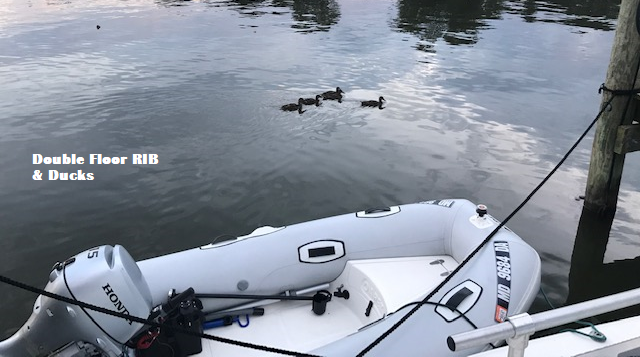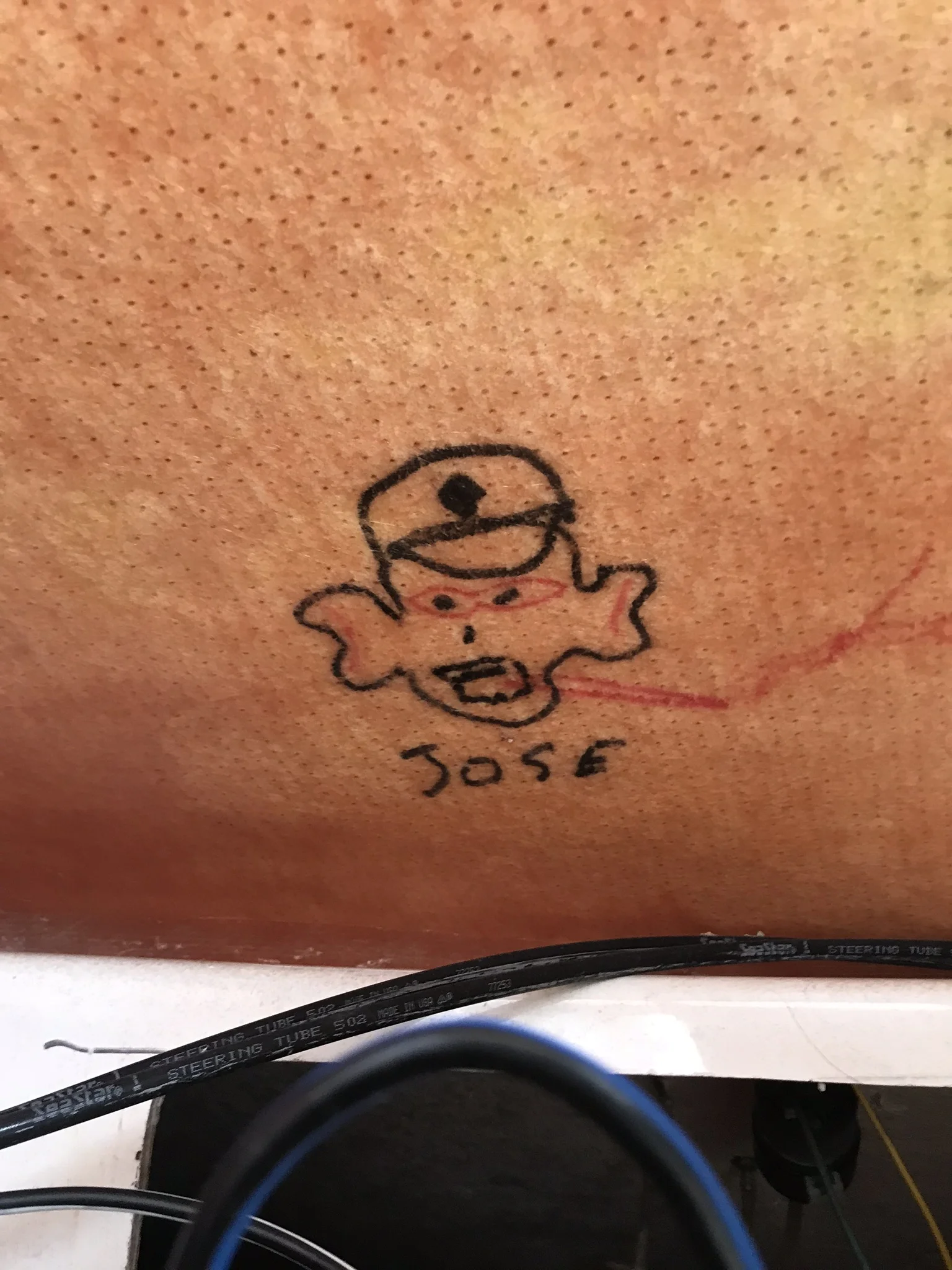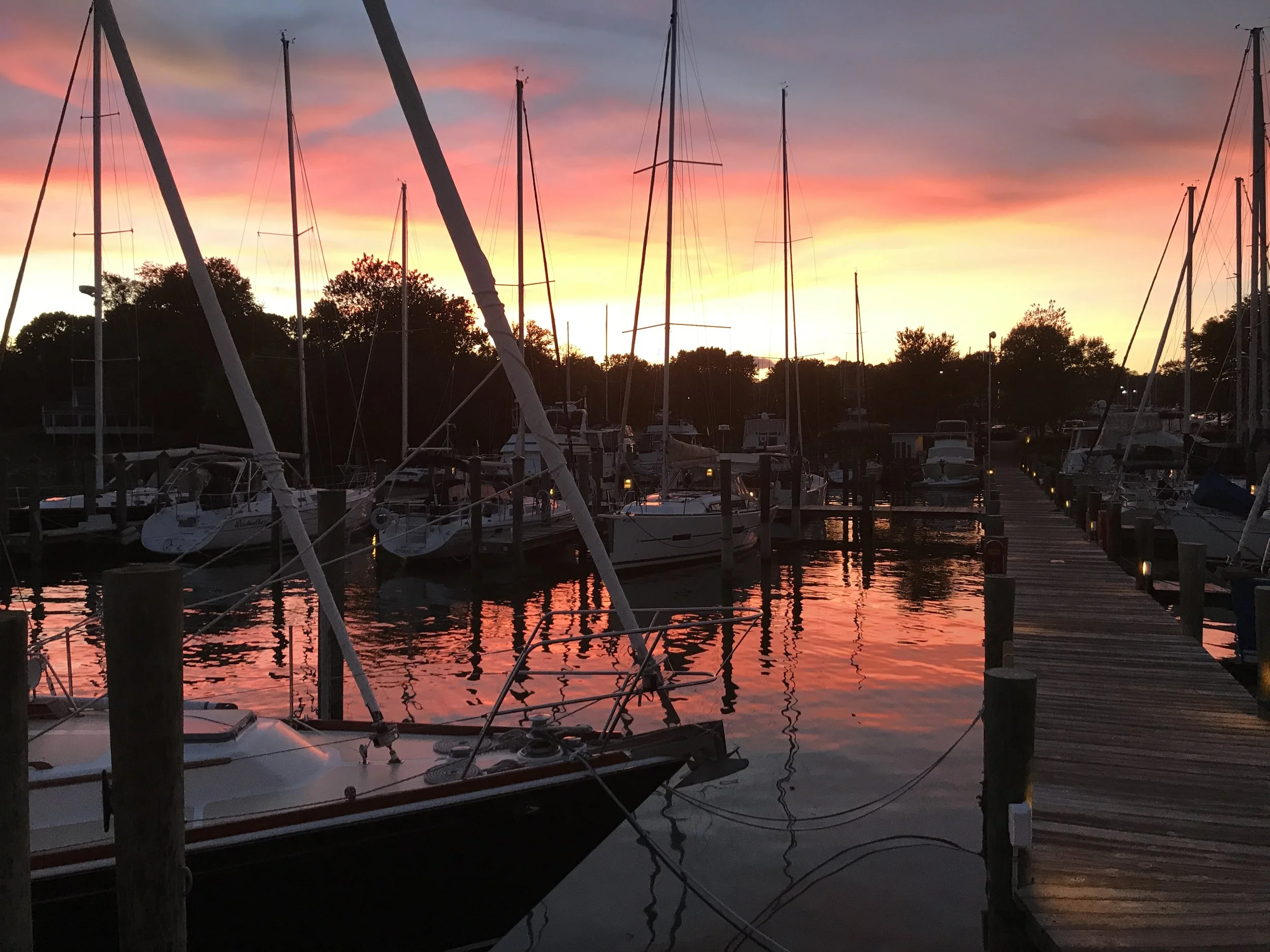quit playing with your dinghy! part 2, inflatables, RIBs & hard sides
As I continue my exposition on dinghies, as mentioned in Part 1. I'm going to review several different types of dinghies, what seems to work, what doesn't, and what could be considered vanity serving. Assuming that you've found and purchased your perfect boat. You’ve settled aboard and the excitement of ownership has died down a bit, you start tallying the inconveniences of your purchase to balance it against the joy it's providing you. Chief among these may be: that it's a long way from the deck to the shore. And lightbulb! It occurs to you; Hey! I just bought a boat, so now I need to buy another one! Enter the dinghy chase. I’d bet that you've started your search the electronic way which landed you in this lost corner. I’d also bet that so far, you've probably located lots of different dinghy styles and, more importantly, pricing. So, let's trim that list by starting with beginner misgivings and the most common first-timer mistakes. Ultimately, let’s try to qualify what could work for your set up. We'll talk actual dinghy hulls first and then dive into propulsion in part 3. As the two always look to be one thing but are usually purchased separately. And please bear in mind that I'm coming from a saltwater power boating point of view. My opinion of some of the options doesn't necessarily apply to calmer freshwater boating. All of you big lake people can be in my club though.
The first dinghies that will grab your attention during the search will likely be or variants of the West Marine Roll up inflatables, Walker Bay, or West Marine WaterTender. These all range in around $500-1500 (watch for sales, I've seen as low as $300). I won't disparage the quality of these boats, but I can tell you that you will start to regret your purchase somewhere around the third launch. It'll go like this: Your first launch will be all excitement, second and third routine building, the rest ending in regret once the shortcomings present themselves. A biggie is that these guys can only handle a 2-5 hp gas or LP powered (short shaft) motor or electric equivalent. What you'll learn the hard way is that this isn't enough power to push these boats into a breeze when loaded to max weight, which isn't as much as you'd think. Two adult passengers, a cooler, fuel can, required safety gear and the motor can easily be over the max capacity. The hull shape and length of lower end inflatables are a detractor too. It may be okay in Nana's pond, but 6" chop with a headwind will ruin your day trying to get out to your anchorage. Similar to riding an old school 10-speed bicycle on a gravel road. (Now, I do need to give the Walker Bay it's due. It's a little more stout that the West Marine value leaders and has a bunch of add-ons to make it more usable. The reality is that it's more of a sailing 101 boat than a good dinghy for marina hopping or supply runs. It’s pricier too) Ultimately, the legacy of these lower end dinghies is spent on Craigslist, in a shed or garage, stowed or sadly abandoned on a dinghy rack at the marina.
The base model, slat bottom, West Marine 8’ roll up inflatable. 2.5 Max HP
Which as it turns out; Hunting for orphans on the dinghy rack is the cheapest place to snag a bargain. If your situation demands a low priced entry and wants to take a shot at the $1500 and the lower crowd. Don’t buy a new one. Before you drop any coin head over to the local marina offices to ask if they have any abandoned dinghies for sale or even free, if you find something you like, offer them 10 cents on the dollar, and you probably pull a jackpot provided you remove the dinghy from the premise (don’t forget the lean release and title if they have it, you’ll need it for registration and such). Elbow grease, some caustic cleaners, and waxing will usually bring these sad sacks back to life. Bottom line, while these dinghies are inticing for their low entry fee, if you are more than a holiday weekend warrior, it'll be money wasted. In fact, the cost of relieving yourself of it may become higher than the purchase cost. Hence the dinghy rack orphan epidemic. They just don’t deliver and become a nuisance rather than a joy, which is what we don't want for any watercraft.
A local marine dinghy rack, I’d venture a guess and say there’s a couple orphans looking to be adopted in this bunch.
Next level and novel: The Porta-bote, Portland Pudgy, Quickboat, Seahopper, and any number of other "specialized" offerings that are available: These dinghies may have a place aboard your boat. As they can fill certain nitches. One of the downsides to these novel designs is that they all suffer the same low power yipps as the West Marine value leaders and other “bathtub” dinghies. The strong point of these guys is that they usually do tout a gimmick that may fit your application. For example, a Porta-bote or Quickboat on a 28-32' sailboat with a reverse sloped transom might make a lot of sense. It can be folded away quickly and lashed to the lifelines while leaving a clear deck. Their stability in the water under power tends to be much better than a basic roll-away inflatable dinghy. It's still a pain to set up, deploy, and the hull feels like standing on a plastic trampoline, but hey, it might be what works for your set up.
Porta-bote a fold away option. Max 9 HP. Much better than others in this price range
The hard-sided Portland Pudgy, on the other hand, is a pretty stout little guy. Emphasis on “little”. An interesting thing about the Pudgy is that I’ve seen it mounted in a transom-to-transom style using a pivot mount. Allowing you to swivel the bow up into the air making for easy dry stowing and deploying. It's still not the greatest for marina-hopping with a crew, but it could work well for practical needs. The roto-molding plastic hull, to me, is the shiny feature of the Portland Pudgy. Robust and simple to make repairs on if you bang it up. I believe that roto-molded dinghies will start replacing mid-grade inflatables in the not so distant future.
Portland Pudgy, very robust and compact.
Speaking of, let me introduce you to the Whaly. Here's where functionality meets a reasonable price point and a long life expectancy. Whaly has several models under $5000 that put RIBs in this same price range to shame. Weight, capacity, HP handling, and utility are equal to or greater than any RIB at this price. Oh ya, did I mention it's roto-molded plastic! Similar to a Yeti Cooler, any number of kayaks or even construction site toolbox. You don't have to worry about an expensive punctured Hypalon tube that you'll never get to seal quite right again. Or have to worry about mildew growth bleeding through like with inflatables. They're not the prettiest girl at the dance, but you'll get some knowing nods of approval from your friends.
Whaly 370 at 12’ long, storage locker, grab rail, level floor $3995 vs $8000 for it’s RIB counterpart.
Now, starting in this midprice range and running to the extravagant, you find a spectrum of inflatables and RIBs dinghies out there. If you go this route, it is best to know what options you're looking for to gauge the real cost to value ratio. Inflatables come in several different setups, and not all are equal by a long shot. Even within brand names. The first thing to grasp is that an "inflatable" doesn't have a solid hull. I'm not talking about tubing on the sides, but the material strung between the tubes that make up the rest of the hull. There may be floorboard inserts or fold-out planking sitting on top of this area, but it will still have PVC or Hypalon (rubber) making up the bottom of the boat. Some have high-density inflatable tubes that form the floor/hull shape to make a ( )-v-( ) to provide a better ride. But, a true inflatable has no permanent hard material underneath in contact with the water. The benefit of this is that they can be deflated, rolled, and stowed in a relatively small space.
Upgrade to the RIB, which stands for (R)igid (I)nflatable (B)oat. These guys differ from the inflatable in that they have a hard material bottom with inflatable tubes attached to it and are the most common dinghy you’ll see. You could think of them more like a "boat" with inflatable tubes attached, whereas an inflatable is more of a construction-grade pool float. Usually, RIBs can maintain some buoyancy even if the tubes deflate. In this way, they do provide an extra measure of safety. The benefits of the RIB is all in the hull and not so much the tubes. There are aluminum and fiberglass hull material options. Aluminum is my utilitarian preference, but fiberglass is usually much nicer to look at. Also, there are double floor options, which provide a flat working surface to stand on above the hull. Otherwise, what makes up the "floor" will be the top side of the hull. The downside of which is that everything will tend to slide to the centerline as you move about. Life jackets, oars, beer, groceries, fuel tanks, your shoes, etc. And depending upon the hull design may collect along with any funky bilge water. They'll most certainly be underfoot.
This is our dinghy, “Danger Mouse”. APEX 10 RIB with the double floor, at 15 HP its fast enough to scare you
Other options can include benches, storage, and even helms complete with depth finders, navigation, and radios. All very convenient and appealing to the toy collector in us boys. The cost of which adds up in the weight. As more add-ons equate to more weight, more weight requires more horsepower and fuel to move and more crane power to lift and stow. That is on top of the initial cost. Moderately fitted RIBs can reach upwards of $12,000. Crazy fast water jet-powered ones can go for $30,000. Now we're talking signing up for another boat vs. a dinghy. But, there again, what’s your situation?
One downside to RIBs being the most common and fastest wearing dinghy is that they tend to decrease in value relatively fast. Expect a 20-30% drop in value year over year for the first five years. The overall condition of the inflatable materials being the largest factor. An inflatable tube refit is possible but usually, prices the RIB outside of its market value.
Beforehand I mentioned the tubes being of lesser importance than the hull but, they still merit review. The majority of inflatables and RIBs on the market use one of two different materials in their construction. Hypalon or PVC. Never both as they do not mix well. Differences and opinions of which vary by person, environment, and cost. The short version is that PVC is less expensive and takes to repairing better but gets scolding hot and disintegrates faster in tropical sunlight where Hyaplon does not. A lot of PVC owners will invest in “dinghy chaps” to keep cool and protected.
Dinghy Chaps on an PVC inflatable by Sailrite.com
Again, it is about your situation. It is, however, essential to know which one your dinghy contains as patches and glue on accessories are very much material specific. Neither material is all that tough against pilings or dock hardware. Inflatable sides are more about not causing damage to the hazards you may brush. In my view, this is where the benefit of a roto-molded hull would work for you. Soft enough that contact will make more noise than making any damage to either surface. Other than a possible rub mark that could easily wipe off or buff out with hand wax. Tough enough to let ride against a piling while you grab dinner and drinks without having to overthink docking lines or the use of fenders.
Yet another option that's out there is the hard-side dinghy. I'd classify these as more of a little boat than a dinghy. In my mind these rank better under the term tenders. Although, these terms are entirely interchangeable similar to boat and yacht. One is a T-shirt and flip flops, and the other is penny loafers and polos. For the nautical nerd; The dinghy is considered a ship servicing or rescue boat while the tender (usually on the larger side) is primarily for transport from a ship to shore. Size and context are everything, as most nautical terms are more about how one thing relates to another, divided by the size, plus distance to the square root of its direction. In other words, confusing as hell, so go with what feels right. Call a fender a rubber bumper thingy; we'll get the picture.
Okay, hard sides: These do tend to be more associated with the diehard sailor, luxury cruiser yachts or the one-off "I snagged a great deal at an estate sale and I’m making it work" guy. The most significant downside regarding these boats is that they deliver and take damage too quickly. Piloting one does take more finesse and forethought. You're not able to slide upside the dinghy dock or your buddy's boat without creating some fuss and possible deep scratching. This type of damage will typically be superficial, but it could drive you bananas dependant on your personality. To make up for its lack of softness, you'll need to be ever ready with fenders or install oversized rub rail. There are some models out there that do consider this. There are inflatable add-on side tubes available on the market too. ( But, if you’re going to go down that road why not just get a RIB?) On the upside, they tend to last decades if cared for while a RIB or inflatable try as you might start showing it's “marine age” 4 or 5 years into its life. Given the longer life expectancy, you can expect the value to diminish slower. In the boating world, that's the best you can hope. Another bright side is the potential for it to follow with you though several other boat ownerships, become a trailered weekend runabout if you decided to sell your boat but don’t plan to stop boating, or even becoming a family heirloom of sorts.
I'll mention my favorite hard side to round out this article before we get into motors in the next one. The Boston Whaler 110 Sport. If you have the crane power and the cash, this may be the way to go. If you find that you need to sell this boat in a hurry, there'll be no shortage of buyers lining up. It's the same size as a RIB of the same length but has almost double the hull space because the tube area is usable space. It's foam-filled “unsinkable”, as are all Whalers. Lovely to look at and has a bench helm & console. From the pictures, it's hard to see, but it does have a stout rub rail. It's not without its faults, though; It won't beach well without some type of protection added to the keel. Incorrect bedding of hardware can severally damage any Boston Whaler's foam core, which is very common on dealer-installed accessories. The smaller Boston Whalers are known for stress cracking in the footwell corners. It's not as stable as it's RIB counterpart when boarding. Mainly due to the ability of a boarding passenger to focus all of their weight close to the edge. The tendency to step over or lightly step on the tube to reach the center of the RIB provides the feeling of more stability. She weighs in at a hefty 650 lbs wet, limiting your choices in davits to the upper side of $7500. Another mention for being downright beautiful (top of the page) is the Calyber Boatworks 12. We discovered this bad boy at the 2019 Annapolis Boat Show. I loved it instantly. It’s not really a practical tender for the mid-sized 35-55ft cruiser but for the weight, speed and looks I expect to see these mounted on the foredeck of big sport fishers or some of the larger cruisers. Do a Google Image search and check these guys out. They’re quite something to look at. Very reminiscent of the old 50s era runabouts. At the time of writing this article, the company did not have a dedicated website.
Boston Whaler 110 Sport
Next up, we'll talk about motors, horsepower ratings, power ratio, shaft lengths, maintenance, and the all-important weight.
Cheers Mike













